Intel Performance Midrange
In recent months we have said in CPU recommendations that Intel and AMD enjoyed parity in the price ranges and processor speeds where they competed. Of course, AMD did not compete at the top speeds. We normally added that Intel still enjoyed a significant overclocking advantage if that was an important feature for you.
Things were shaken up quite a bit with the introduction of the new Intel Core i7 Socket 1366 CPU. Phenom did not compete nearly as well against the Core i7, but Phenom II is now leveling that playing field - in the upper midrange to low high-end where Phenom II now has competing speeds. In addition, the Phenom II 45nm finally removes the last real impediment to choosing AMD in this price range as it overclocks very well indeed and gives Intel a run for the money - clock for clock.
That makes choosing between the Intel Core i7 system below or the AMD Phenom II system on the next page a more difficult decision than it has been in quite a while. Both systems contain parts that have been chosen for their excellent overclocking abilities, and both motherboards can deliver the 3.8GHz+ overclocks that Core i7 and Phenom II are capable of reaching.
| Intel Performance Midrange PC | ||
| Hardware | Component | Price |
| Processor | Intel i7 920 Nehalem Socket 1366 (2.66GHzx4 4x256KB L2, 8MB L3 Cache) | $295 |
| Cooling | Vigor Monsoon III LT for Socket 1366 | $60 |
| Video | EVGA 01G-P3-1282-AR GeForce GTX 280 SuperClocked Edition 1GB | $320 |
| Motherboard | GIGABYTE GA-EX58-UD3R LGA 1366 Intel X58 ATX | $185 |
| Memory | G.SKILL 6GB (3 x 2GB) DDR3-1333 (PC3 10666) Triple Channel Kit | $145 |
| Hard Drive | Seagate Barracuda 7200.11 ST31000333AS 1TB | $110 |
| Optical Drive | LG BD/HD DVD / 16x DVD+/- RW GGC-H20LK | $99 |
| Audio | ASUS Xonar DX 7.1 | $90 |
| Case | Antec Nine Hundred Black Steel ATX Mid Tower | $100 |
| Power Supply | SILVERSTONE ST70F 700W SLI Ready CrossFire Ready 80 PLUS Certified Modular Active PFC | $100 |
| Display | ASUS VW246H Black 24" 2ms(GTG) HDMI Widescreen LCD Monitor (1920x1080) | $290 |
| Speakers | Logitech G51 155 watts RMS 5.1 Surround Sound Speakers - Retail | $90 |
| Input | Microsoft CA9-00001 Black PS/2 Standard Keyboard and Optical USB/PS2 Mouse - OEM | $16 |
| Operating System | Microsoft Vista Home Premium OEM | $99 |
| Bottom Line | $1999 | |
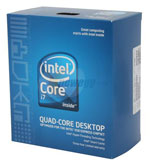 |
The i7 920 is the lowest priced Intel Core i7 you can currently buy - the other two choices are in the $600 to $1000 price range. Don't assume, however, that the 920 is not a powerful processor. The i7 920 is capable of reaching the performance levels of the top i7 CPUs, because it has also proved to be a dynamite overclocker for those who care about that, and that are also willing to provide decent cooling to the i7 920.
You start with a processor that is 30% faster in some parameters than a Core 2 Quad, and then you find you can also overclock this 2.66GHz CPU to 3.8GHz to 4GHz with careful tweaking and better cooling. As you saw in our Phenom II Launch review, the 920 reached as high as 3.8GHz at stock voltage and 4.0 GHz when overvolted to 1.35V. That is a 50% overclock. You will certainly be very happy with Core i7 base performance, but if you are interested in overclocking you will be ecstatic with this new CPU.
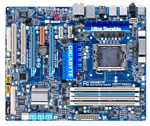 |
The Gigabyte GA-EX58-UD3R has the distinction of being the lowest priced X58 chipset motherboard you can currently buy. Others will soon join that $200+/- club shortly providing more X58 value choices. You probably also noticed that Gigabyte is trying to get as much mileage as possible from their UD3R designation. It seems reasonable to hold on to a good name as much as possible. AnandTech is in the process of testing this value Gigabyte board, and more info will come your way soon. Early user reports are very favorable, including great reports on overclocking. That was enough positive news to choose this Gigabyte for the Performance Midrange Intel System.
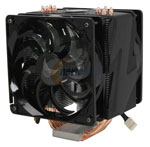 |
Several well-known coolers offer optional adapters for the Intel Socket 1366, but the cooler choice to mate with the Gigabyte X58 board is the Vigor Monsoon III LT. The last time a Vigor Monsoon was reviewed it was an effective but loud TEC (Thermo Electric Cooling) design. This Monsoon is a standard vertical heat-pipe air cooler, with effective and quiet push-pull cooling. The Monsoon appears a good match to the OC capabilities of the i7 920.
 |
At present, most of the editors at AnandTech prefer the performance of GPU solutions from AMD/ATI these days… that is, except when running Intel Core i7. The X58 chipset/Core i7 works best with an NVIDIA video card and drivers. AMD is aware of the issue and is working to provide improved drivers for the i7 platforms, but for now the choice for i7 system video card is the (deep breath…) EVGA 01G-P3-1282-AR GeForce GTX 280 SuperClocked Edition 1GB. This EVGA card comes factory overclocked to a core clock of 621MHz and an effective memory clock of 2268MHz. This video card really is not the equal in performance of the 4870 X2 used in the AMD Performance Midrange system, but the stability and trouble-free operation makes up for the small performance loss - at least for today.
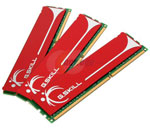 |
The Intel i7 system includes the G.Skill triple-channel DDR3-1333 6GB memory kit. To be blunt, most of the 1333 3x2GB triple-channel kits use the same memory chips, although there are sometimes differences in the SPD chip on the DIMM. We chose the G.Skill on the basis of best price for a 6GB triple-channel DDR3-1333 kit from a known brand. You can select from a number of quality memory suppliers, but make sure to include their warranty and customer service reputation in your decision.
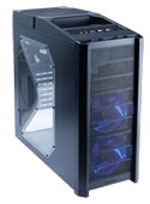 |
The case receives an upgrade with the selection of the well-regarded Antec Nine Hundred that bottom mounts the power supply and provides plenty of internal storage. Cooling is provided by 120mm fans and a massive 200mm top exhaust fan.
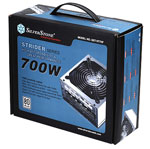 |
The power supply is the well-regarded Silverstone ST70F 700W SLI/CrossFire Ready 80 PLUS Certified modular PSU. The Silverstone 700W has made almost everyone's top performance list for a PSU and it is a good buy at its regular selling price. At the current selling price of $100, it is an outstanding value. The Silverstone is a modular power supply with the flexibility offered by custom cable selection and arrangement.
 |
The ASUS Xonar DX 7.1 is one of the top-performing audio cards on the market today. It is a great upgrade to the onboard sound if you want better sound quality. Game compatibility is excellent, but most game creators assume everyone has a Creative Labs sound card.
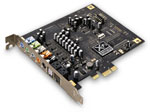 |
If your main reason for having a powerful i7 computer is gaming, you may prefer the Creative 7.1 Sound Blaster X-FI Titanium at the same price that we used in the AMD Performance Midrange system. In our opinion the sound quality is better on the ASUS or an HT sound card, but game compatibility will never be a question with a Creative Labs sound card.
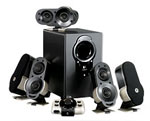 |
The speakers have been upgraded to the Logitech G51 155 watts RMS 5.1 surround sound speakers. They are selling for $90 after a $40 rebate, which is a great value on these well-regarded powered speakers.
 |
The LCD display resolution is the same 1080p HD resolution chosen for the Value Midrange systems. The size of the monitor increased to 24" so everything on screen is just a little larger. The ASUS VW246H 24" provides the preferred HDMI input, as well as DVI and an analog VGA port. Panel speed is rated at an incredible 2ms, but we have found most current LCD panels perform similarly and the speed rating does not really guarantee very much. The ASUS monitor provides a sharp image, good colors, and fast panel speed at a very good price of $290. For more information on what matters in a monitor and how to read LCD specifications, take a look at our Holiday 2008 Display Guide.
The remaining components are the same as our Value Midrange systems. The hard drive remains a 1TB Seagate. The optical drive is the LG BD. The Microsoft OEM keyboard and optical mouse provides input, and Vista Home Premium OEM runs the system. For more information on these components, refer to page 3.










77 Comments
View All Comments
aenagy - Sunday, February 1, 2009 - link
I can't find the Xigmatek HDT-D1283 on the Xigmatek web site for thier air cooling products (http://www.xigmatek.com/product/aircooling.php)">http://www.xigmatek.com/product/aircooling.php) or by Googling (http://www.google.ca/search?hl=en&q=site%3Axig...">http://www.google.ca/search?hl=en&q...k.com+D1...Is the author referring to the Dark Knight-S1283V/Dark Knight-S1283? Which one?
If so, what is the difference between the S1283V and S1283. Even after downloading the manuals I have not been able to figure it out. Maybe its the difference between the push-pin mounting vs. screws?
Joe Schmoe - Monday, January 26, 2009 - link
Hi folks!!I love this site and it was an excellent article.
I have a slightly different (perhaps warped) perspective on this topic. It's based on too many years of living in poverty so I could keep my hyperfast, sweet internet connection going.
I'm in the USA so EU readers don't laugh at my appalling slow connection.
I think your midrange systems might be specced a little bit high.
It's exactly what I might buy today but, when I was still in college and money was a little tighter my gaming rigs were a little more.. rickety.
Do that many midrange rigs have blue ray drives?
Speaking from my heart..
I think I'm a midrange builder. A midrange PC doesn't have to start off so... well rounded....
No matter what we tell ourselves or how much we plan it. There are situations when we usually blow all our money on the new CPU (whether its rational or not) and upgrade the rest of the system bit by bit over the next year.
Practically all the CPU's on the market today are fast enough that's almost an undisputed fact.
But we have the I7 and the Phenom 2!! brand new!! for sale!! new chips!!
It's almost impossible to buy anything else. I couldn't bring myself to buy a e8600 instead. I can get a blue ray drive next month. I'd swap one dvd drive between two computers for 6 months if I have too to price in . (I've done that many times)
If you grabbed a regular DVD drive for now and used the onboard sound for a while. Those are things are easy upgrades-- two paychecks. You saved about $150 which you can through at the processor and board.
If you drop down to a 4850 (i know it hurts a little) and now can get an I7 920 and the x58 board. Within 6 months you buy a 2nd 4850 and you're golden.
The same setup for a Phenom 2 build.
My X-fi Extreme card passes from system to system like its a family hierloom.
By summer time I'd have the blue ray drive and probably crossfire 4850's.
My next computer is probably going to be:
One of the new processors.
New motherboard.
My current graphics card.
My current 4 gigs or RAM 6 gig of ram four of which I own already.
It's sad but true..
Well maybe not this time..
7Enigma - Wednesday, January 21, 2009 - link
Well wanted to thank everyone in the comments section, this and other articles for piecing together my upgrade system. Pretty much replaced everything except for the HD and case. Wanted to give a quick rundown of how it went and my initial impressions of the components:-E8500 CPU- You can tell it's been a while since I've built a system. Not seeing pins ON the chip kind of threw me for a loop. :)
-XIGMATEK HDT-S1283 120mm Rifle CPU Cooler was very annoying. Currently @35C idle at stock speeds on the E8500. The push pins suck, absolutely, positively suck. I had serious concerns I had damaged the CPU because some of the pushpins refused to stay down and would pop back up rocking the heatsink. The backplate accessory was $15 which would have increased the price of this cooler to top cooler territory. I will have to wait and see how this pans out because I do not have a good feeling about the longevity of those pins (imagine if they were to release when upright and on, that would be a disaster). I will never purchase a pushpin design again that is for sure. Also have quesetionable faith in the design of the base plate that has the heat pipes directly at the base. There are significant ridges that will not contact the cpu core. I used a bit more thermal paste than normal to hopefully fill in these ridges. Oh and this thing is HUGE. I literally sat there for 20min trying to decide which direction I wanted the fan/heatsink to face. There was NO clearance issues (thank you so much Mr. Fink!), which made the decision harder since I was not constrained by the mobo design. I ended up going with the heatsink moving air from the ram towards the back of the case (from right to left if looking at the tower sitting upright). I had originally wanted to go from the bottom of the case to the top, but I was concerned the GPU would block airflow.
-Gigabyte GA-EP45-UD3R - As the article mentioned I have no plans on SLI/X-fire and so went with the R model instead. Very nice piece, installed without a problem, retaining bracket for the CPU is well designed/made. I have zero complaints except for the short IDE connectors. Forced me to use a SATA DVD burner since the single one included could not stretch to hit both the HD and the burner even when I moved them closer together. Funny thing: I tried to find the VGA monitor cable on the mobo to do a test run before plugging in the expensive gpu only to realize it has no onboard video! :) Don't need it, but I hate firing up the system for the first time, and like to have the least amount of components in case something fries (never happened yet to me but I still worry).
-Tuniq Potency 550w PSU - On recommendation by Mr. Fink I grabbed this new PSU. Let's hope it makes the 500-550w PSU roundup that hoepfully will be coming out soon. Seems very high quality for the cheap price ($40 after $40 rebate), not modular which is annoying to me after coming from a modular PSU, but at least sleeved. I have a full tower (I think) and unfortunately the connectors are relatively short and so I had to move my HD closer to the PSU which isn't a big deal and would be a non-issue with a smaller mid-tower.
-SAPPHIRE 512MB Radeon HD 4870 VapoChill- This is a kickass card. Factory OC'd, very nice heatpipe tech, and while not completely externally exhausted outside of the case, a fantastic design. To top it off with the rebate it was actually $10 CHEAPER than the stock Sapphire 512MB card. Don't have temp numbers yet as I haven't installed Vista and Catalyst drivers. Extremely pleased with this purchase and highly recommend it. There is nothing like being able to keep a video card stock and still being able to OC it more if needed (I hate changing out the coolers on GPU's).
-OCZ Reaper 4GB (2 x 2GB) DDR2-1066 Dual Channel Kit- This one had me really concerned. Firstly because the package came slightly damaged and I was concerned it may have been damaged (it's just a clamshell blister pack), and secondly because with the heatpipe it is VERY tall for ram. I was concerned the CPU cooler would not clear the ram, but again a massive thanks for Mr. Fink for making sure his components were compatible. Solidly designed, they have some massive heatsinks on them and feel like you could throw them across the room. Let's hope the added weight doesn't cause issues with the socket over time however.
OK that's about it. One more time thank you very much for the article and followup advice! Now off to game!
7Enigma - Wednesday, January 21, 2009 - link
Forgot to mention all parts were purchased from either Zipzoomfly (Vista and E8500) or Newegg (everything else). Ended up with about $100 in rebates if I so choose to fill them all out (some are $10 and probably not even worth the effort).7Enigma - Tuesday, January 20, 2009 - link
Quick question. What is the rational behind only 4GB of ram in the non-i7 systems? With DDR2 ram prices so rediculously low and using Vista X64, isn't there a benefit to higher ram amounts?Just wondering because I am building a C2D rig and only got 4GB and wondering if I should grab another kit at these cheap prices.
robl - Sunday, January 18, 2009 - link
First off, great article and good suggestions on the components. I'm itching to pull the trigger on an i7 upgrade with lots of memory and can't wait for your i7 motherboard roundup.I started pricing the intel midrange, and it looks like the motherboard only has 4 memory slots, yet you suggest a triple channel kit. Perhaps just 2x2GB or 4x2GB should be recommended for this board instead?
Do you have any suggestions for a good overclockable i7 MB for ~$200 that has 6 memory slots?
Thanks again!
7Enigma - Tuesday, January 20, 2009 - link
Triple-channel as the name implies means 3. So you get multiples of 3 for the ram amounts. Typically this is 3GB (1X1X1) for the budget builds (I don't know whom would choose this if they are already spending a good bit on a new system), or the much more common 6GB (2X2X2) setup as the guide recommends.HTH
StormyParis - Thursday, January 15, 2009 - link
I think value starts to drop sharply after two cores. Does anyone have stats on CPU utilization over a typical day, with 1/2/3/4 cores ?4 gigs is also debatable. To me, it's definitely more 'comfort' than 'value'. Even today's bloated software/OS does not really need that much, in most cases. Running WoW, a browser with 10 tabs, and a handful of other apps in 2gigs causes little to no disk thrashing.
Also, I don't understand why the monitor is included. There's no need to change monitors when you change PCs, and monitor choice is very dependant on use (purely PC work vs films vs games ...).
Wesley Fink - Thursday, January 15, 2009 - link
Our Intel mid-range value system is in fact a Core 2 Duo - two cores. As we detailed in the Guide going for 2GB instead of 4GB will generally save you around $15 in today's market with commodity memory pricing. If saving $15 is that important to you then go for it.When we do not list a monitor in system builds many readers complain about the ommission. If including a monitor disturbs you then just subtract out that price from the build.
smacfarl - Thursday, January 15, 2009 - link
The big news in pc performance has got to be the ssd drive.I fully expected that you guys would be incorporating $60 sata II flash drives as the boot drives in all these systems in the mid range. Really they should be in the under $1000 systems as well. Sure you can then get a second traditional 500-1RB HDD drive for your movies, music, photos, whatever but even a 32GB flash drive is more than enough to run your OS and main apps from flash. Boot time goes way down and performance up. That's without even using the SSD upgrades announced at CES.
Seriously where is your head guys? I figure this first review post CES would usher in the new era, but it looks like you guys are sadly behind the curve hear at AnandTech. I am kind of sad because I have always looked at you guys as the leader in terms of system reviews. For example your comment that $300 budget boxes were now feasible minus OS and monitor is right on the money, though many other sites don't want to recognize this reality.
Wake up Anandtech! Post another guide review with the sdd drives before some else becomes the self-build system review leader.